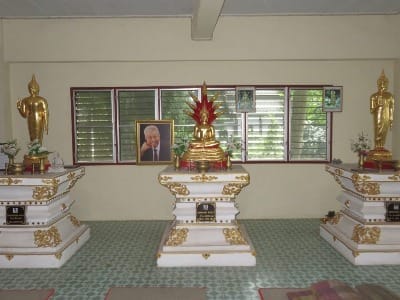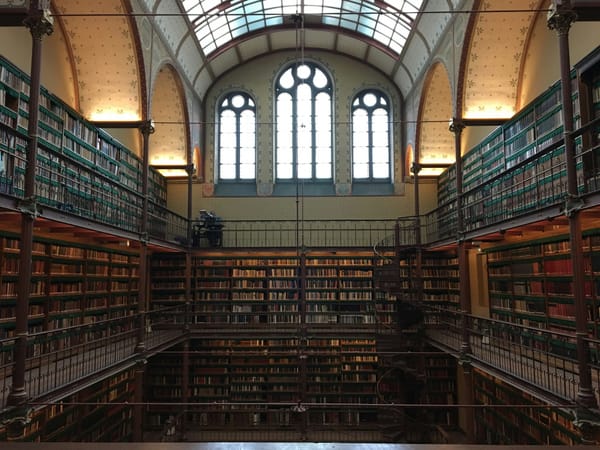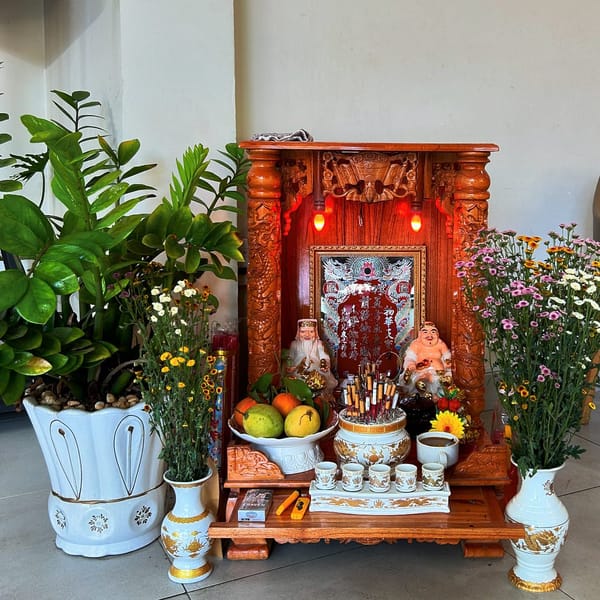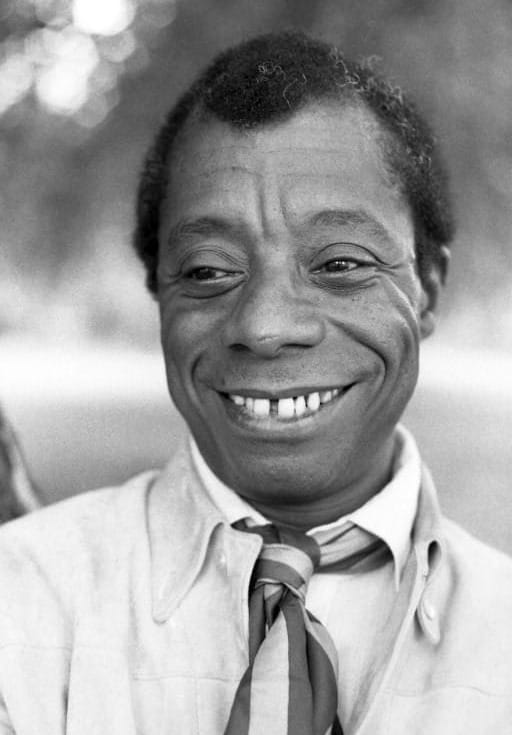seven days of silence: my experience doing a vipassana meditation retreat in thailand

On the 7th of June 2024, I checked in to the International Buddhist Center at Doi Suthep Temple, just outside the city of Chiang Mai in northern Thailand.

After hearing about vipassana meditation retreats online and from fellow travellers on my trip, I felt inspired, and wanted to spend some time trying to clear my mind through meditation.
vipassana?
'Vipassana' is a Sanskrit word, meaning 'clear mind' - which is the goal of the meditation retreat.
the meditation center
Blue signs and arrows denote the way from the main temple complex (in its elegant and extravagant architecture) to the International Buddhist Center, where the meditation retreats take place.

On the way there, you get to see the village where monks and other locals/temple caretakers live. And when you arrive, an amazing view of Chiang Mai city greets you, from the amazing natural vantage point.

I moved into my room after checking in - at this center, we each got a room to ourselves (which I was grateful for, after staying in hostel dorm rooms for months) with meditators of the same gender staying next to you in an apartment style building.

the rules
On a vipassana course, people spend their stay in silence, abstaining from talking but also from many other parts of everyday life.
No talking, yes. But also no screen time, no eye contact or non verbal communication with others, no smoking or alcohol consumption , no eating past midday, no reading or writing.
Personally, I found that the silence, while it sounds scary, was actually one of the least challenging aspects of the retreat.
Meditations could be done in solitude, in your own room, or with others in the meditation hall.
the daily routine
Wake up was at 5am. At 5:30am, all of the meditators would attend a ‘dhamma talk’ (dhamma is the buddhist set of moral values) given by a monk, each day revolving around a new topic relevant to meditation and buddhist teachings on life in general.
After a small break, breakfast was at 7am. All of the food was vegetarian, as abstaining from eating meat is a key part of Buddhism and the vippassana meditation technique. We usually ate rice and an unspiced curry with vegetables and a meat substitute for protein.
From after breakfast until 11am, we meditated (i’ll get into the technique we used in the next section).
11am was lunchtime, where we usually had the same curry with rice, but also had other options in the form of different curries. There also was a small chocolate bar we could take for dessert, and this was the last meal of the day.
At 11:30, the monk would speak with meditators individually. This was the one time of the day you could converse with another person. The monk would give us advice on meditation and show us new techniques to use throughout the day.
And then, from roughly midday until 6pm, we meditated. we weren’t expected to spend the entire six hours in meditation, so we could also utilise the time inbetween doing laundry, showering or resting in between sessions.
At 6pm we chanted as a group. Stories of the buddha's life and his wise teachings would be read in Sanskrit, which was beautiful and relaxing, while a little hard to follow due to the words’ rhythm and the language barrier, although we did have the chant typed out in a booklet.
The monk would speak for a little afterwards, reminiscent of the morning dhamma talks, and then until 9pm we meditated. Then it was bedtime, so we got enough sleep to wake up bright and early the next day.
meditation techniques
So when I thought of meditating for ten days, I imagined that I’d be sat down all of the time. But actually, half of the time was spent in walking meditation.

This revolved around spending time carefully placing one foot in front of the other and heavily focusing on the sensation. Being mindful while walking was a new thing for me, but it’s fascinating how complex of a movement it is when you really analyse it.
After walking meditation, we would sit meditating for the same amount of time. This was exactly what you’re probably imagining: cross legged, focused on breathing, eyes closed; trying to transcend thought.

We began with fifteen minutes of each, and by the end of my stay I graduated to doing half an hour. The teacher would gradually extend the amount of time, according to how I felt as the days passed.
Before sleeping, the teacher recommended another type of meditation. Laying meditation. As you can probably guess, this was done lying down. You’d place both hands over your abdomen and focus on your breathing, visualise the position your body was in and then focus only on the parts touching the mattress.
The monk told me that this one is a valuable meditation technique, yes, but also a great way to relax before going to sleep (better than scrolling on social media until you feel sleepy, for sure). Why not try it out for yourself?
buddhist influences
While, of course, meditation is now practised all over the globe and across different faiths, its roots are in Buddhist and Hindu tradition. Thailand is a Buddhist country, so it makes sense that vipassana meditation courses there would have heavy Buddhist influences.

For starters, there was an opening ceremony, and a closing ceremony for meditators on their last morning. They consisted of making offerings to the monk, who would then give thanks and worship to the enlightened Buddha and, in the closing ceremony specifically, the monk would chant with the meditator in Sanskrit.

In the meditation hall, and in most rooms in the center, there was a shrine to the Buddha. It is considered rude to hold one's head above a statue of the Buddha, so you must lower your head when passing one of these statues. It's also disrespectful for your feet to face the statue directly, or, in fact, to face the monk or any other meditator directly.
reflections
Fairly quickly after starting the meditations, I realised that I would have benefitted from a little more practice beforehand. While travelling, I had fallen out of any trace of a meditation routine that I kept at home, so going from no meditation to hours of it in a day felt like quite an extreme change.
In the future, when I check into my next Vipassana meditation retreat, I'll make sure to have meditated for at least two hours a day beforehand. This'll ensure that I don't feel out of my depths; I wouldn't be going from zero to a hundred by signing up for hours of daily meditation when I was used to none.
I found that having time to meditate (without any external stimulations that I'm used to on the day-to-day) was great for my mind. I could put the distractions to the side, and dedicate time to clearing out my inner space.
However, at the same time, I found myself missing vices like smoking (a bad habit, I know), or even just scrolling on social media.
We were actually allowed to keep our mobile phones on us for the morning alarm clock, and I'm not proud to say that, towards the end of my stay, I caved in and watched an episode of Friends to fall asleep.
The next morning, though, I felt like I'd thrown a spanner in the works, and I felt noticeably different. Phones really are drugs. Next time, I'll make sure to give them my phone when I arrive, and use a digital alarm clock, to get rid of the temptation and fully immerse myself.
Most of all, though, I missed the freedom that comes with the nomadic lifestyle I was living on my travels. Especially since my travels were nearly over, I felt the desire to go and explore more of Thailand before flying back to Gatwick. I initially booked to spend 10 days in the retreat, but I felt that shortening it to 7 was the best thing to do in my situation, considering that I wanted to see more of Thailand while I was there.
a moment of deep meditation
I remember one moment on my retreat as being the most profound. I was in a sitting meditation, focusing on my breathing and trying my best not to daydream.
Sometimes, I find that in trying to quieten my mind and focus on the present, a voice in my head just tells me to 'focus on the breath', and then I'm just repeating that phrase over and over, and perhaps not being as present as I could be.

One time, though, I had pulled myself down to earth from a daydream and was telling myself to 'focus on the breath', like usual.
But then something unusual and pretty magical happened. The voice faded away, and for a split second I felt like my mind was totally clear. I remember exhaling, and it felt like I was one with the air coming from my nostrils, and the air around me. It was the closest I've ever got to thinking no thoughts, which I feel like is the goal of deep meditation.
But then, as soon as I registered what I had just experienced, the experience was over; the voice in my head began to cheer, 'that was so cool! what just happened?'. Then, I got back to focusing on the breath and trying my best not to analyse what had just happened too much.
Overall, the week I spent in the International Buddhist Center at Doi Suthep Temple was incredibly beneficial for my mind and me. It was challenging, in ways I didn't imagine it to be, but I took a lot away from it. I now meditate more often, working towards my next Vipassana retreat where I hope to complete a whole 10 day period.





